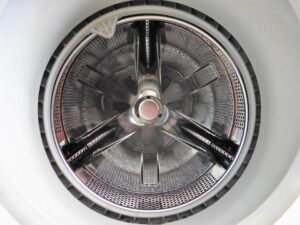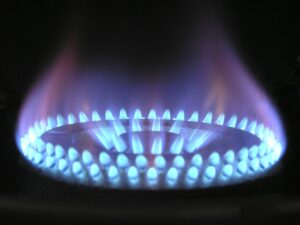Washer leaks can have a significant impact on both your home and your wallet. Not only can they cause damage to your floors and walls, but they can also lead to costly repairs or even the need for a replacement washer. It is important to address leaks promptly to prevent further damage and expenses.
Leaking water from your washer can seep into your floors and walls, causing structural damage and potentially leading to mold growth. This can result in expensive repairs and pose health risks to you and your family. Additionally, if left unaddressed, leaks can cause damage to other appliances or electrical systems in your home.
Addressing leaks promptly is crucial to prevent further damage. The longer a leak goes unnoticed or unaddressed, the more extensive the damage can become. By taking immediate action, you can minimize the potential costs and headaches associated with washer leaks.
Key Takeaways
- Tackling leaks in your washer is important to prevent water damage and save money on repairs.
- Common causes of washer leaks include faulty hoses, damaged pumps, and worn door seals.
- Signs of a washer leak include water on the floor, damp clothes, and unusual noises during operation.
- Prevent leaks by regularly maintaining your washer, checking hoses and connections, and using the correct detergent.
- DIY solutions for washer leaks include tightening connections, replacing hoses, and cleaning the pump. However, professional repairs may be necessary in some cases.
Common Causes of Washer Leaks: Identifying the Root of the Problem
There are several common causes of washer leaks that you should be aware of in order to identify the root of the problem. One common cause is worn hoses. Over time, the rubber hoses that connect your washer to the water supply can deteriorate and develop cracks or leaks. Another common cause is a damaged door seal. If the seal around the door of your washer is cracked or torn, it can allow water to leak out during the wash cycle.
Identifying the root cause of a washer leak is important because it can help prevent future leaks. By addressing the underlying issue, you can ensure that the problem is fully resolved and minimize the risk of future leaks occurring. For example, if you replace a worn hose with a new one, you are less likely to experience another leak in the future.
Signs of a Washer Leak: How to Recognize the Issue
Recognizing the signs of a washer leak is crucial in order to address the issue promptly. One common sign of a leak is water on the floor around the washer. If you notice puddles or dampness on the floor after running a load of laundry, it is likely that you have a leak. Another sign is a moldy or musty smell coming from your washer or laundry room. This can indicate that water is leaking and not properly drying, leading to mold growth.
Recognizing these signs can help prevent further damage. By taking action as soon as you notice a leak, you can minimize the potential for mold growth and structural damage. Additionally, addressing the issue promptly can save you money by preventing more extensive repairs or the need for a replacement washer.
Prevention is Key: Maintaining Your Washer to Avoid Leaks
Prevention is key when it comes to avoiding washer leaks. Regular maintenance and cleaning can help keep your washer in good condition and prevent leaks from occurring. One important maintenance tip is to clean your washer regularly. This includes wiping down the inside of the drum, cleaning the detergent dispenser, and removing any lint or debris from the filter.
Another important preventative measure is to inspect your washer regularly for any signs of wear or damage. This includes checking the hoses for cracks or leaks, inspecting the door seal for any tears or cracks, and ensuring that all connections are secure. Following the manufacturer’s guidelines for maintenance and care can also help prevent leaks.
DIY Solutions for Washer Leaks: Fixing the Problem Yourself
If you notice a leak in your washer, there are several DIY solutions that you can try before calling in a professional. One common DIY solution is to replace worn hoses. This involves turning off the water supply, disconnecting the old hoses, and installing new ones. Another DIY solution is to replace a damaged door seal. This typically involves removing the old seal and installing a new one.
When attempting DIY solutions, it is important to follow step-by-step instructions and take safety precautions. Make sure to turn off the power and water supply before attempting any repairs, and always consult the manufacturer’s guidelines for your specific washer model.
Professional Repairs: When to Call in the Experts

While DIY solutions can be effective for many washer leaks, there are situations where professional repairs may be necessary. Complex issues with the pump or motor, for example, may require the expertise of a qualified professional. Additionally, if you are unsure of how to properly address a leak or if you do not feel comfortable attempting repairs yourself, it is best to call in a professional.
Hiring a qualified professional for washer repairs is important because they have the knowledge and experience to properly diagnose and fix the issue. They can also ensure that the repair is done safely and effectively, minimizing the risk of further damage or leaks.
Water Supply Issues: Addressing Leaks in the Hoses and Connections
Water supply issues are a common cause of washer leaks, but they can often be addressed with simple DIY solutions. Loose connections are a common culprit of leaks. To address this issue, start by turning off the water supply and then tightening any loose connections. If this does not solve the problem, you may need to replace the hoses altogether.
Worn hoses can also cause leaks. To replace a worn hose, start by turning off the water supply and disconnecting the old hose from both the washer and the water supply. Then, install a new hose by connecting it securely to both ends.
Drainage Problems: Fixing Leaks in the Drain Hose and Pump
Drainage problems can also lead to washer leaks, but they can often be fixed with DIY solutions. Clogs in the drain hose are a common cause of leaks. To address this issue, start by disconnecting the drain hose from both the washer and the drain pipe. Then, use a plumbing snake or a wire hanger to remove any clogs. Once the hose is clear, reconnect it securely.
A damaged pump can also cause leaks. To replace a damaged pump, start by disconnecting the power and water supply. Then, remove the old pump by disconnecting the hoses and unscrewing any mounting brackets. Install the new pump by connecting the hoses and securing it with mounting brackets.
Door Seal Leaks: Repairing Leaks in the Washer Door
Leaks in the washer door seal can be a common issue, but they can often be repaired with DIY solutions. Cracks or tears in the seal can allow water to leak out during the wash cycle. To repair a door seal, start by removing the old seal by pulling it off or unscrewing any mounting brackets. Then, install a new seal by pressing it firmly into place or securing it with mounting brackets.
It is important to follow step-by-step instructions and take safety precautions when attempting to repair a door seal. If you are unsure of how to properly address the issue or if you do not feel comfortable attempting repairs yourself, it is best to call in a professional.
Replacement Options: When It’s Time to Replace Your Washer
In some cases, it may be more cost-effective or practical to replace your washer rather than attempting repairs. Signs that it may be time to replace your washer include frequent leaks, costly repairs, and an older model that is no longer efficient or effective.
When selecting a new washer, consider factors such as capacity, energy efficiency, and features that meet your specific needs. It is also important to properly dispose of your old washer. Check with your local waste management facility for guidelines on how to dispose of appliances responsibly.
Conclusion: Summarize the importance of addressing washer leaks promptly and provide a call-to-action for readers to take action to prevent leaks in their own washers.
In conclusion, addressing washer leaks promptly is crucial to prevent further damage and expenses. Leaks can cause damage to your home and pose health risks if left unaddressed. By identifying the root cause of a leak, recognizing the signs, and taking preventative measures, you can minimize the risk of leaks occurring in your washer. DIY solutions can be effective for many leaks, but professional repairs may be necessary in some cases. It is important to follow step-by-step instructions and take safety precautions when attempting repairs yourself. If you are unsure or uncomfortable with DIY repairs, it is best to call in a professional. Remember, prevention is key when it comes to avoiding washer leaks, so make sure to regularly maintain and clean your washer according to the manufacturer’s guidelines.
If you’re dealing with leaks in your washer, you’ll want to check out this informative article on 911 Appliance’s blog. They provide valuable insights on how to identify and solve leaks in your washer, helping you avoid potential water damage and costly repairs. With their expertise in appliance repair, 911 Appliance is a trusted resource for homeowners looking to tackle common household issues. Don’t miss out on this helpful article – click here to read it now: Tackling Leaks in Your Washer: Identification and Solutions.
How Can Excessive Shaking in My Washer Lead to Leaks and What Can I Do to Fix It?
Excessive shaking in your washer can lead to leaks due to the wear and tear on the hoses and connections. To fix it, start by diagnosing washer shaking issues. Make sure the machine is level and not overloaded, and check the leveling legs and shock absorbers for wear and tear.



